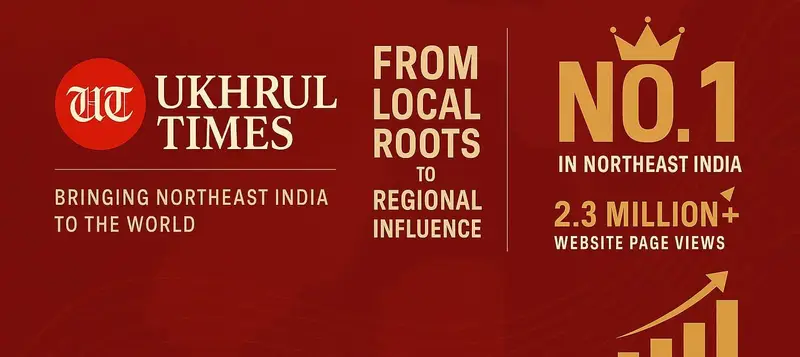Now Reading: Will the Nagas Accept Border Fencing?
-
01
Will the Nagas Accept Border Fencing?
Will the Nagas Accept Border Fencing?

Article 36 of the United Nations Declaration on the Rights of Indigenous adopted by the General Assembly on 13 September, 2007 says “Indigenous peoples in particular those divided by international borders, have the right to maintain and develop contacts, relations and cooperation, including activities for spiritual, cultural, political, economic and social purposes, with their own members as well as other peoples across borders.”
Also read | Longwa: Konyak Union Protests Border Fencing And FMR
The problem began in 1953, when the Prime Minister of India, Nehru invited Burmese Premier U Nu to Kohima. One of the main objectives of the meeting was to divide the Naga homeland between India and Burma. Nehru, unlike Mahatma Gandhi who stated that Nagas had every right to determine their own future as a nation, thought that the wide spread of the Hills between India and Burma belonged to no one, after the British left in 1947. And so they would divide among themselves. Nehru deliberately undermined the indigenous Nagas, led by A.Z. Phizo, who spearheaded the Naga national movement since 1946 and under his leadership, the Plebiscite was conducted in 1951.
After much destruction and a reign of terror, consisting loss of thousands of lives and burning of villages in the years that followed, Rungsung Suisa – a Naga MP from Outer Manipur on the day the Armed Forces Special Powers Act (1958) was passed in the Parliament – said that Nagas would not bow down to forceful intimidation. And that the Indian authorities, the Central government in Delhi listened to the Intelligence Bureau instead of the true patriotic citizens of the land. It was and till today, remains a grave mistake in governance.
Also read | UNC Urges Strict Compliance Against Border Fencing
In India’s carrot and stick policy, Nehru tried with the stick (Armed Forces Special Powers Act, 1958) and thus alienated the Nagas. Then the statehood (carrot) came in 1963. However, it could not quell the Naga resistance. In 1953, the Naga representatives were not allowed to assert their position, so the speeches of Nehru and U Nu at Kohima Public ground were boycotted. It was said that the Indian Prime Minister was embarrassed and infuriated.
Eighteen years after the incident, someone from the government came to Longwa, Mon district in 1971, and erected a pillar as a boundary between India and Burma. Till 1972, Nagaland (formed in 1963) was under the Ministry of External Affairs. Two things happened in 1960: Phizo reached London; and an Indian military aircraft was shot down by the Nagas.
Also read | Nagaland Legislative Assembly Passes Resolution On FMR; Says Consult With People In Indo-Myanmar Border
Nagas took it lightly as long as their way of life was not disturbed. They joked that the chief, Angh’s kitchen is on one side and the bedroom on the other side of the “international border.” They can hunt on any side; their cattle roam freely and grow crops in their own land spread across the imagined boundaries. The status quo could have remained till the signing of the Naga national political solution.
Now, if they are coming to fence the borders, and disturb their way of life, it would be a different matter. They may confront and cut down. (As I write this, my daughter came and asked what I was writing and further asked as I read out: “Cut down what? The fence or the persons?”)
The Naga Hoho, Nagaland Goan Buras Federation and Senior Citizens’ Association of Nagaland in a joint communiqué on February 4, 2025, stated that abrogating the FMR agreement would put the Indian government in violation of the international law and the basic human rights of the Naga civilians to move freely in their homeland.
Opinion | Manipur’s Border Battles: Unraveling a Deeper Conflict
The Chandel Naga People’s Organization has announced a mass rally and a 12-hour total shutdown on February 12 to protest border fencing and the scrapping of FMR.
“The Government of India’s decision to scrap the Free Movement Regime and enforce border fencing through Naga inhabited areas is not just a policy shift – it is a direct attack on the identity, rights and dignity of the Nagas. The justification given for this move – to curb illegal immigration and poppy cultivation – is nothing but a diversionary tactic to cover up the State’s failure in governance,” says Sword Vashum, President of the Tangkhul Naga Long in a press note.
Must read | CNPO Calls for Mass Rally cum Total Shutdown on Feb 12
The author may be reached at cassiazimik85@gmail.com
(The opinions expressed in this article are those of the authors and do not necessarily reflect the views of Ukhrul Times. Ukhrul Times values and encourages diverse perspectives.)



























































